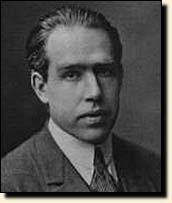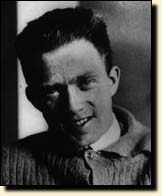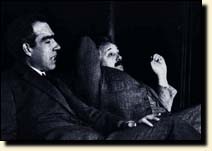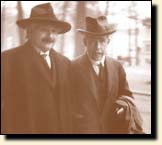"Of all the communities available to us there
is not one I would want to devote myself to, except for the society
of the true searchers, which has very few living members at any
time."


- Max Planck found the first hints of the quantum theory
in 1900.
- H.A. Lorentz: "He meant more than all the others I have
met on life's journey."
- Erwin Schrödinger and Louis de Broglie developed
a quantum theory that appealed to Einstein. He said de Broglie
had "lifted a corner of the great veil." But it was soon found
that this theory was mathematically equivalent to the Heisenberg
theory, which Einstein distrusted.
- Max Born, another pioneer of the quantum theory, was
a friend of Einstein for many years.

| In 1916 Einstein devised an improved fundamental
statistical theory of heat, embracing the quantum of energy.
His theory predicted that as light passed through a substance
it could stimulate the emission of more light. This effect is
at the heart of the modern laser.
This theory was further developed by the Indian physicist
S.N. Bose. He sent a draft paper to Einstein, who was inspired
to develop a still more general approach. The terms stimulation
and cooperative phenomena, used in laser physics, could
describe the discovery process as well.
|

LASER: Light Amplification
by Stimulated Emission of Radiation.
|


The Danish physicist Niels Bohr showed
in 1913 how the quantum idea could explain the actions of electrons
inside atoms. |
By the 1920s
most physicists had realized that their familiar mechanics,
developed over centuries by Newton and many others, could not
fully describe the world of atoms. Physics had to be rebuilt
to take into account the fundamental discreteness of energy
that was first pointed out by Planck and Einstein. Einstein
himself contributed a number of key ideas to the developing
quantum theory. But through the early 1920s much in quantum
theory remained obscure. |
| Beginning in 1925 a bold new
quantum theory emerged, the creation of a whole generation of
theoretical physicists from many nations. Soon scientists were
vigorously debating how to interpret the new quantum mechanics.
Einstein took an active part in these discussions. Heisenberg,
Bohr, and other creators of the theory insisted that it left
no meaningful way open to discuss certain details of an atom's
behavior. For example, one could never predict the precise moment
when an atom would emit a quantum of light. Einstein could not
accept this lack of certainty; and he raised one objection after
another. At the Solvay Conferences of 1927 and 1930 the debate
between Bohr and Einstein went on day and night, neither man
conceding defeat. |

The German physicist Werner Heisenberg.
His 1925 quantum equations opened the way to a complete description
of atomic mechanics. See our big online exhibit Werner
Heisenberg and the Uncertainty Principle. |
Click here to "see" quanta

"Quantum mechanics is certainly imposing. But
an inner voice tells me that it is not yet the real thing. The
theory says a lot, but does not really bring us closer to the
secret of the 'Old One.' I, at any rate, am convinced that He
is not playing at dice."


Einstein and Bohr

|
By the mid 1930s, Einstein had accepted quantum
mechanics as a consistent theory for the statistics of the behavior
of atoms. He recognized that it was "the most successful physical
theory of our time." This theory, which he had helped to create,
could explain nearly all the physical phenomena of the everyday
world. Eventually the applications would include transistors,
lasers, a new chemistry, and more. Yet Einstein could not accept
quantum mechanics as a completed theory, for its mathematics
did not describe individual events. Einstein felt that a more
basic theory, one that could completely describe how each individual
atom behaved, might yet be found. By following the approach
of his own general theory of relativity, he hoped to dig deeper
than quantum mechanics. The search for a deeper theory was to
occupy much of the rest of his life. |
|
|

